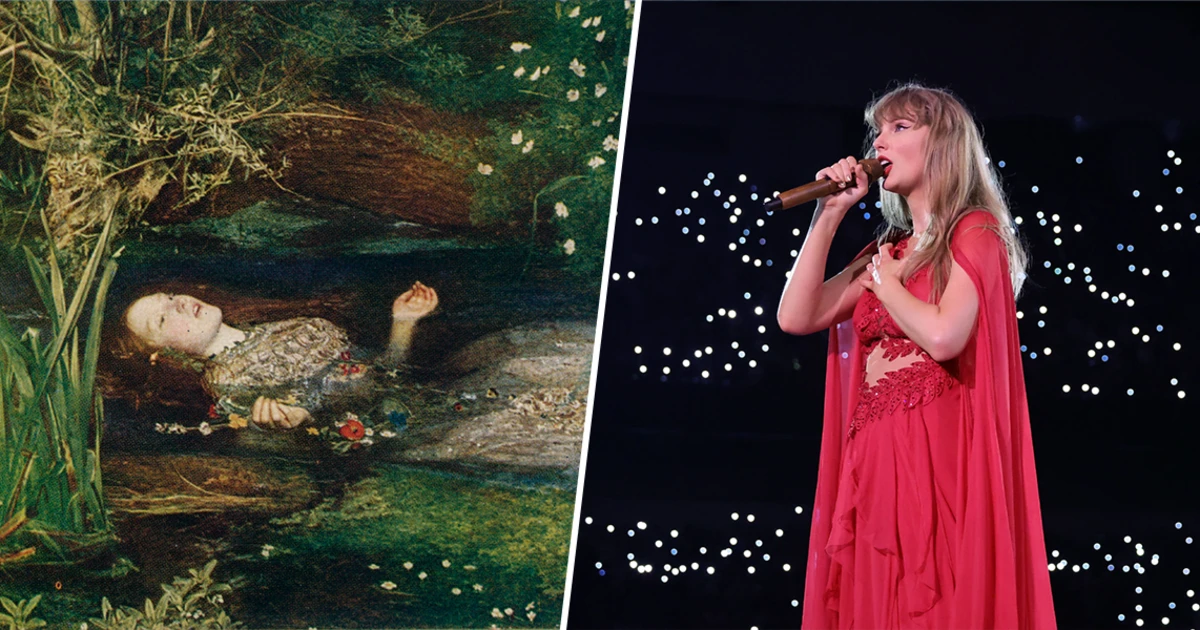
In her follow-up to the “The Tortured Poets Department,” Taylor Swift is continuing to delight her bookish fans with literary references on her 12th studio album, “The Life of a Showgirl.”
The 35-year-old Grammy winner famously crammed tons of literary references into the lyrics and song titles of her previous studio album. Her earlier songs, too, feature allusions to “The Great Gatsby,” “Alice’s Adventures in Wonderland,” the Robert Frost poem “The Road Not Taken” and more.
Even before the album’s official release on Oct. 3, fans have surmised that in “The Life of a Showgirl,” Swift circles back to one of her earlier inspirations, English playwright and poet William Shakespeare, whose characters Romeo and Juliet appear in her 2008 hit “Love Story.”
This time around, Swift name-drops Ophelia, seemingly referencing a character from another tragic play, “Hamlet.”
Ophelia’s name pops up in title of the album’s first track, “The Fate of Ophelia.” But who is she? And what does her name signify?
What To Know About ‘Hamlet’
“Hamlet” is a tragic play that Shakespeare wrote sometime between 1599 and 1601.
The play, which is set in Denmark, tells the story of the troubled young prince Hamlet, who vows to exact revenge on his uncle Claudius after Claudius murders Hamlet’s father, the king of Denmark, to steal the throne and marry Hamlet’s mother, Gertrude.
Over the course of the play, Hamlet’s mental health declines as his grief and anger overwhelm him.
Who Is Ophelia?
Ophelia is the daughter of Polonius, a counselor to Hamlet’s uncle Claudius. She and Hamlet also happen to be in love.
King Claudius objects to the pair’s romance as does her brother Laertes. Ophelia yearns to please the men in her family, but she also wants to be true to Hamlet.
While the character of Ophelia has been interpreted in many ways, she’s generally known for her beauty and innocence as well as her lack of power in a patriarchal society. That lack of agency, plus personal pressures to please her father, brother and Hamlet torment her.
After Hamlet accidentally murders Ophelia’s father and mocks her while ending their relationship, Ophelia’s mental health unravels and she drowns herself and dies.
Her death isn’t directly depicted in the text. Rather, it’s announced by Queen Gertrude. Gertrude tells Laertes that Ophelia fell into a “weeping brook.”
“But long it could not be/ Till that her garments, heavy with their drink/ Pulled the poor wretch from her melodious lay/ To muddy death,” Gertrude says in Act 4, Scene 7. (Of note, in Swift’s last big interview, appearing on “New Heights,” fans clocked several mentions of the number 47. Later in the episode, she confirmed, “I love numerology.”)
How Has Ophelia Been Depicted in Art and Pop Culture?
Ophelia has appeared again and again in pop culture and the arts. John Everett Millais’ 1852 painting, “Ophelia,” depicts the character floating in water in a gauzy dress surrounded by lush greenery and flowers. With her eyes open, she looks dazed, and the image is meant to depict her singing before she drowns. Aussie pop star Kylie Minogue re-created that pose for her 1995 duet with Nick Cave, “Where the Wild Roses Grow.”
She’s inspired countless more songs, perhaps most famously Bob Dylan’s 1965 song “Desolation Row.”
Dylan sings, “Now Ophelia, she’s ’neath the window/ For her I feel so afraid/ On her twenty-second birthday/ She already is an old maid,” and later addressed the lack of power that is the character’s undoing, singing, “Her sin is her lifelessness.”
The Lumineers also namecheck the character in the 2016 song “Ophelia,” while members of the feminist punk band Ophelia Rising pay tribute to her with their name.
Most recently, Ophelia was the subject of a 2018 film “Ophelia” starring Daisy Ridley. The historical drama, which was based on the novel by Lisa Klein, depicts the tragedy of Hamlet from Ophelia’s perspective.



